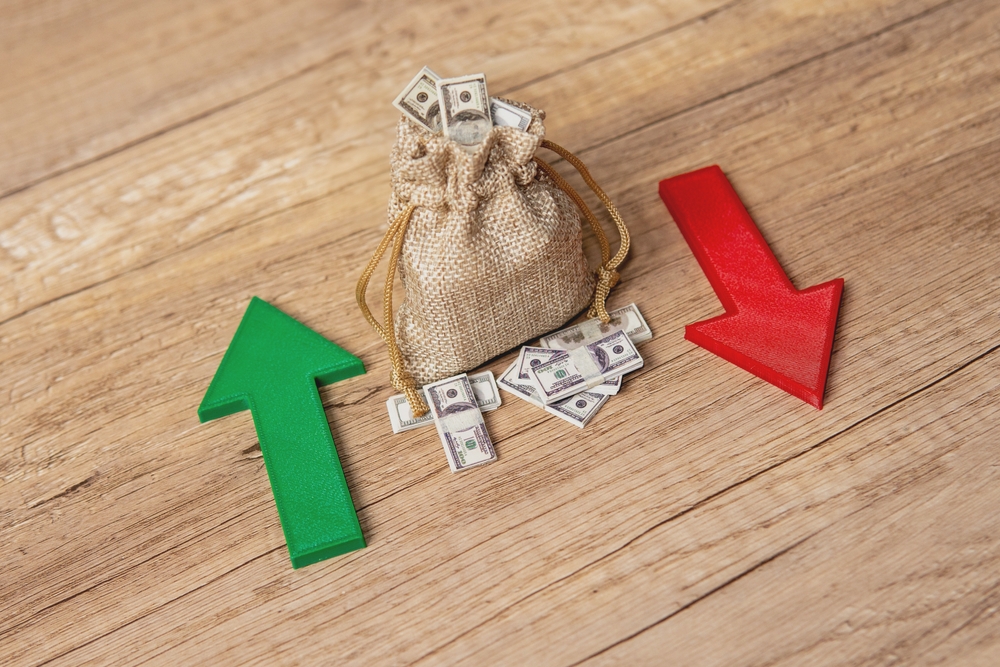
Source: Yahoo Finance
Tariffs and the Return of Policy Shockwaves
Former President Trump’s recent decision to reintroduce steep tariffs, some as high as 125% on Chinese goods, sent global financial markets into turmoil. The announcement came unexpectedly, reviving concerns reminiscent of the 2018–2019 U.S China trade war. Despite Trump’s claim that he "knows what the hell he's doing," markets interpreted the sudden escalation as a sign of policy unpredictability.
Almost immediately after the announcement on April 2, equity markets across the globe reacted negatively. The Nasdaq Composite dropped nearly 6% and suffered the highest daily point loss in history. The S&P 500 and Dow Jones suffered multi-percent declines as well. Risk-sensitive sectors like technology and manufacturing were hit hardest, but the fear spread broadly, pushing safe-haven assets like U.S Treasuries and gold higher.*
However, this was not the end of the market fallout. In just four trading days, the S&P 500 lost 15% of its value, falling below the psychological threshold of 5,000 points. The tech-heavy Nasdaq dropped 17%, with other global indices following suit.*

Source: Yahoo Finance
Volatility Spikes Amid Uncertainty
The market’s fear gauge, the CBOE Volatility Index (VIX), which measures expected short-term volatility in the S&P 500, surged in response. From relatively calm levels near 14–15 in March, the VIX spiked above the 50-point mark, levels last seen at the beginning of the pandemic. This jump followed Trump’s tariff announcement and reflected investors' rush to hedge against further losses. The index has swung wildly since, mirroring deepening instability.
Interestingly, this spike wasn’t just about tariffs. It was about the unpredictable nature of Trump’s policymaking. His chaotic and economically inconsistent moves have been unsettling investors since his inauguration in January.
Temporary Ease for the Markets
Seven days after the initial announcement, on April 9, Trump displayed another inconsistency. The White House partially reversed course by announcing a 90-day delay on most of the tariffs, sparking a brief rally in global markets.
Following that announcement, U.S. stock markets soared, delivering one of the most dramatic rebounds in history. The S&P 500 jumped by 9.6%, marking its best single-day performance since 2008 and the third-largest gain since the 1930s. The Nasdaq Composite rose an even more remarkable 12.2%, its biggest increase since 2001 and the second largest on record. Meanwhile, the Dow Jones climbed 7.8%, also reaching a historic day across all major indices.*
Yet, by April 10, it was clarified that sector-specific tariffs, such as those on pharmaceuticals, would remain in force. Pharmaceutical stocks plunged nearly 7% in a single day, underscoring how quickly markets respond to trade policy inconsistencies. Broader equity markets also resumed their decline amid persistent tariff fears.*
A Pattern of Volatility-Driven Policy
This is nothing new. During Trump’s first term, markets became familiar to “tweet-driven” volatility, a sudden swings triggered by political statements. What’s different now is the scale and concentration of power. Without strong institutional checks, Trump’s economic decisions now have a sharper and more immediate effect on global financial flows.
For investors, the message is clear: volatility is back and so is the need for robust risk management. Hedging strategies using VIX derivatives or rotating into defensive sectors are gaining popularity. More importantly, there is renewed demand for gold, bonds, and emerging market hedges as protection against ongoing policy shocks.
* Past performance is no guarantee of future results.


